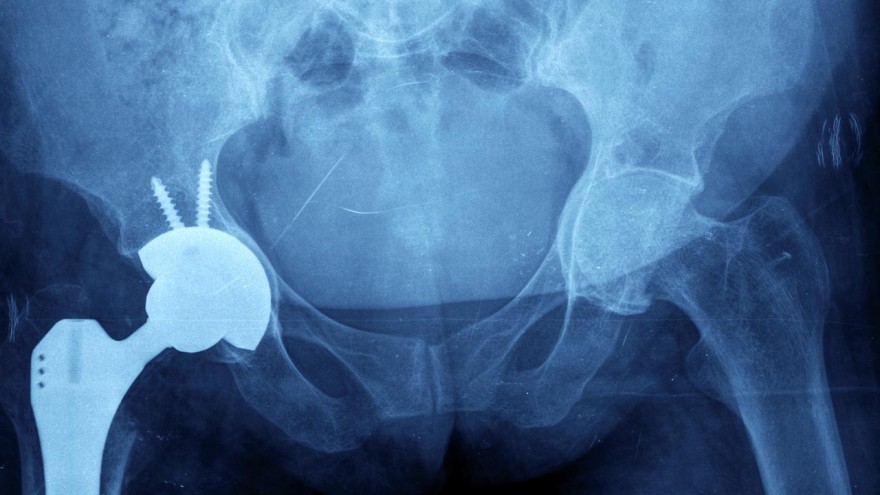Factors to Consider Before Hip Replacement Surgery
Your parent may be at the stage in life where their joints have deteriorated to the point where they experience pain and limited motion on a daily basis. When their symptoms of arthritis begin to compromise their ability to accomplish mundane tasks, you may want to help your parents look at treatments for the condition
When people have pain, they may immediately consider joint replacement surgery. Hundreds of people have this surgery each year, and the number rises each year. But there are several things to consider before choosing hip replacement
Reasons for Hip Replacement Surgery
- People turn to hip replacement surgery due to arthritis, nerve damage or to repair debilitating fractures
- Hip replacement (hip arthroplasty) is the entire or partial replacement of the hip joint with a prosthetic device. The surgery can help people with damaged joints to regain movement and significantly reduce pain in the joint
- People usually turn to surgery when other treatment methods fail. Your parents may be considering hip replacement. It is an important family decision that you and your parents may want to discuss. There are consequences and post-operative situations that your parents may not be ready for
Here are some things to consider before having it done.
What Other Treatments are Available?
While hip arthroplasty is common and largely successful, there may be other ways to manage osteoarthritis. There are treatments available that allow people to function with the condition
- A person with damaged joints may relieve themselves of pain by losing weight.
- A person may have to limit or find alternative activities to alleviate pain.
- Walking with a cane or crutch can help relieve pressure on a damaged joint.
- Physical therapy is a way to strengthen the muscles around the joint and give the hip a rest from doing all of the work.
- Doctors may prescribe anti-inflammatory medications to relieve pain.
- Cortisone injections can also help relieve pain.
- Hip resurfacing may be an alternative. It preserves more of the bone than a total hip replacement.
Is Hip Replacement the Best Option Right Now?
Age and overall health are major factors to consider before choosing hip replacement
People with hip arthritis should ask for X-rays and an exam to see how bad the arthritis is and evaluate how serious the pain or deterioration is. General practitioners should do a health screening on patients before referring them to an orthopaedic surgeon
Tests will help a doctor determine if the hip is indeed the cause of the pain. A hip replacement will be of no help if the pain originates from the spine or lower back
The age of the patient should also be a consideration before deciding to have surgery. Younger patients who have full and active lifestyles will wear out their prosthetic hips sooner, requiring another hip replacement
On the other hand, elderly patients must consider whether they can withstand the rigors of the procedure and post-operative rehab
The muscle and tissue health near the hip is also crucial, because the surrounding muscle is important to a successful arthroplasty. Weak muscles and nerve damage around the joint may not support the new hip
There shouldn’t be any health questions remaining when the patient goes into surgery. Patients should be informed of risks and possible complications before giving their full consent
What Are the Risks and Complications?
- Hip arthroplasty has a high success rate. In fact, 80 percent of patients in the United Kingdom have good results. But as with every surgery, there are risks
- Some of the major risks after hip replacement are infection, blood clots and dislocation of the device. Infections and clotting can be taken care of by using medications like blood thinners and antibiotics
- If your mother or father is considering the surgery, they may want to consider the type of implant they will receive. There are many types of devices, made up of metal, polyethylene and ceramic
- There are dangers involved with implants where two or more components are metal. Metal-on-metal (MoM) implants have reportedly injured thousands of people in the UK, as well as Canada and the United States
- In March 2012, researchers published data from studies performed on 400,000 patients in the National Joint Registry of England and Wales. The subjects were tracked for up to 7 years. The researchers found that MoM implants had a high rate of failure after 5 years
- As a result, the Medicines and Healthcare products Regulatory Agency suggests patients with metal-on-metal implants get them checked annually. The researchers have urged the British government to ban metal-on-metal hips
Consider This: New Methods for Hip Repair
In the near future, hip replacement surgery may be unnecessary
An article published last year in The Telegraph highlighted researchers at Southampton General Hospital who are pioneering methods that could replace arthroplasty. The researchers have been performing a procedure using stem cells of people in need of hip repair
Those cells from the patient’s bone marrow are mixed with crushed bone of another patient who had hip surgery. The stem cell mixture is used to fill holes in the hip left behind after surgeons removed damage and dead tissue from the site
Researchers say the stem cells tell existing blood vessels to make new ones to supply nutrients to the damaged area
The researchers are still testing the procedure. At this point, test surgery has only been performed on people with osteonecrosis, a disease that causes bones to die due to temporary or permanent blood loss to bones. This form of arthritis is on the rise in the UK, with about 4,000 instances reported a year
Julian Hills is a content writer and blogger for Drugwatch. His journalism career has taken him from newspapers to local television news stations and even a 24-hour cable network in the Southeast. Julian is a graduate of Florida State University









